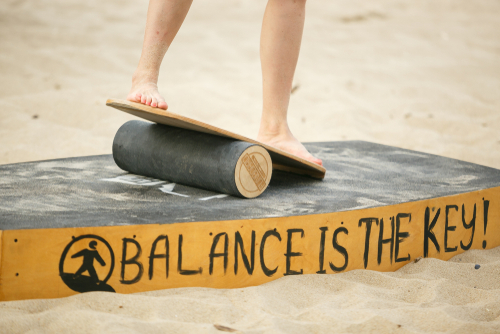Balance, Sensory Stimulation Exercises Can Improve MS Symptoms, BEEMS Program Shows
Written by |

A specially tailored program focused on balance and eye-movement exercises can help multiple sclerosis (MS) patients improve balance, dizziness, fatigue, and quality of life, according to a study published in the journal Neurology.
The study is titled “Efficacy of Balance and Eye-Movement Exercises for Persons With Multiple Sclerosis (BEEMS).”
Balance impairment is a common symptom in patients with MS, and it can limit mobility and affect the ability to work and perform daily tasks. It is known that balance depends to a degree on sensory systems, including vision. Patients with MS often experience vision problems, which can affect their capacity to correct inappropriate movements. In turn, that can lead to further balance issues.
Despite this known association between sensory systems and balance, most rehabilitation strategies to improve balance and gait currently focus on improving strength and nonspecific balance activities.
A team at the University of Colorado School of Medicine developed an intervention program called “Balance and Eye-Movement Exercises for People With Multiple Sclerosis (BEEMS).” This program is based on visual and sensory stimulation combined with balance and movement exercises.
“Most rehabilitation programs to improve balance have focused mainly on strength exercises and balance exercises that are not designed for the specific problems of people with MS,” Jeffrey R. Hebert, PT, PhD, lead author of the study, said in a news release.
“We wanted to see if performing balance and eye movement exercises while processing multiple different sensory information could help people improve their balance and fatigue issues,” Hebert said.
The study (NCT01698086) enrolled 88 patients with MS who were able to walk 100 meters with no more assistance than a cane or other lateral support.
Half of the patients completed the BEEMS program, which consisted of twice-weekly supervised exercises and a daily home exercise plan for six weeks, followed by eight weeks of once weekly supervised exercise sessions and daily home exercises. The exercises consisted of maintaining balance on different surfaces and while walking, with and without head movement, and visual stimulation to promote visual stability.
Participants assigned to the study’s control group were told they were on a waiting list for the program.
After completion of the initial six weeks of the exercise program, participants showed significant improvements in overall assessments of physical and mental health, compared to baseline levels and the control group.
Balance was also improved in these patients. While healthy individuals taking a computer-based balance test scored around 90 or better out of 100, the scores of MS patients undergoing the BEEMS program improved from an average of 63 at the start of the program to an average of 73 after six weeks. The control group scored an average of 62 at the start of the study and 66 after six weeks.
A second evaluation at week 14 of the program showed that patients continued to show significant improvements in balance, overall physical and mental health, fatigue, and dizziness.
“These findings suggest that vestibular [balance] rehabilitation and eye/head/limb coordination under progressively more challenging conditions should be included in physical interventions,” the researchers wrote.
“The BEEMS protocol could be coupled with a functional training program to further enhance improvements of walking and safe participation in daily physical activity,” the team added.
Additional studies directly comparing the beneficial effects of the BEEMS program to other balance training programs are still required, researchers said.





